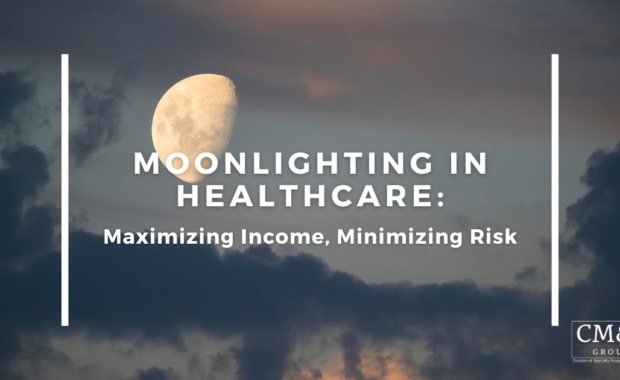More patients… More complex patients
By Steven Lane
If it seems like you are seeing more patients these days, and that they have more health problems than they used to, that’s because you probably are.
The absolute number of patients seeking care is increasing, and many more patients have multiple chronic conditions than they did a generation, or even a decade, ago. Clinicians and researchers point to the rapid recent increase in the prevalence of obesity, along with other lifestyle factors like smoking and lack of physical activity, as the main driver of this increase in chronic conditions.
This trend—“More Patients … More Complex Patients”—is the third of the four trends in U.S. healthcare that were identified in an environmental scan undertaken by AAPA earlier this year as the first step in its strategic planning process. The planning process is designed to produce a plan—called PA Vision 2020—to guide the Academy through 2020. AAPA spoke to PAs in a variety of specialties to see how these increases are affecting their practice.
More Patients, More Older Patients
The increase in the absolute number of patients seeking care has been largely due to the aging U.S. population and overall population growth. Some of the more recent increase has been attributed to expanded access to care as a result of more people being insured through the Affordable Care Act, though the evidence so far seems not to have borne out predictions of healthcare providers being swamped by these newly insured patients. According to the Health Resources and Services Administration (HRSA), 81 percent of projected increased demand for healthcare derives from the growing and aging of the population and 19 percent from increased access to care.
The year 2011 saw the first Baby Boomers reach 65 and become eligible for Medicare—the tip of a very large iceberg that threatens to overwhelm the U.S. healthcare system. Between 2010 and 2050, the percentage of the U.S. population that is aged 65 and older is projected to increase from 13 percent to nearly 21 percent. And on top of this, people are living longer. Over the past 40 years, U.S. life expectancy at birth has increased from 70.9 years to 78.7 years. People over age 65 visit physician offices two to three times more often than any other age cohort and are up to 10 times more likely to be hospitalized.
Kathy Kemle, PA-C, who has practiced in geriatrics and family medicine for more than 35 years, has seen the effects of the aging population first-hand, especially in the numbers of patients with Alzheimer’s disease. Having diabetes doubles the risk of Alzheimer’s, Kemle says—another little-noted side effect of the obesity epidemic. And dementia-related chronic illnesses are the most financially burdensome for patients and their families, Kemle says: ”None of us want to go into a nursing home and most people think Medicare covers the cost anyway so do not consider purchasing insurance. And even if they do, policies typically have many excluders and only cover part of the cost.”
More Complex Patients
Perhaps an even greater contributor to the increased pressure on the healthcare system is the rapid rise in the number of patients of all ages with multiple chronic conditions. Between 2003 and 2023, according to a report from the Milken Institute, the incidence of diabetes will increase by 53 percent, while the overall population will increase by only 19 percent. Cancers are projected to increase even faster, increasing by 62 percent, while heart disease and hypertension will rise by about 40 percent. (See chart.) By 2030 the number of Americans with chronic conditions is projected to be 37 percent higher than in 2000−an increase of 46 million people. In the 2013 AAPA Annual Survey, 60 percent of PAs said they already regularly see patients with three or more comorbidities.
The typical cluster of comorbidities includes obesity, hypertension, dyslipidemia, and diabetes, as well as related conditions like sleep apnea and kidney disease.
“I am seeing a trend towards six or eight comorbidities,” says Sondra DePalma, PA-C, DFAAPA, a PA in cardiology at the Penn State Hershey Heart and Vascular Institute in Pennsylvania. “For example, I might see a patient with coronary artery disease who has had angioplasty after a myocardial infarction, and is treated for hypertension and dyslipidemia. They might also have cardiomyopathy and chronic heart failure, and maybe atrial fibrillation.” She also sees more chronic kidney disease and diastolic heart failure, which “complicates diagnosis,” DePalma explains, as well as treatment: “Patients might have an indication for certain medications, but if they have kidney disease or other conditions as well, those medications might be contraindicated.”
“There are most definitely a lot more chronic conditions out there,” says Ben Taylor, PhD, PA-C, who practices in emergency medicine, family practice and urgent care in various locations around Aiken, S.C. “We are outliving our parents, but have more chronic conditions than our parents did. Back in the day, if someone 25 or 26 came in and said they had chest pain; did we really worry about them having a heart attack? No. But now we might.”
Most PAs attribute the rise of multiple chronic conditions to basic life-style choices: eating too much and not getting enough exercise. “Patients constantly ask me questions like, ‘What do you think of green tea?’” Taylor says. “I tell them, ‘All you need to do is go out and walk.’ And on top of all this, we are not pushing away from the table.”
Not “pushing away from the table,” as Taylor puts it, and not moving enough have combined to create an obesity epidemic that just keeps growing. In 2012, according to the Centers for Disease Control and Prevention, 69 percent of U.S. adults were overweight and 35 percent were obese. The prevalence of obesity has almost tripled since 1960 and if obesity rates continue on the same path, by 2030, more than 44 percent of U.S. adults would be obese. (For a truly startling visual illustration of the rapid increase in the prevalence of obesity since the 1980s, scroll through the CDC slide-show of historical maps here.)
Tami Lee, PA-C, who works in family practice at Roxboro Family Medicine in rural North Carolina, says that she and her colleagues treat a growing number of morbidly obese patients, adults and children alike. She attributes this to a combination of lifestyle choices and lack of community resources. “In our community, many people work in factory jobs, 12 to 15 hours a day, which doesn’t leave much time for daily exercise or meal preparation, ”Lee says. “We also have mostly fast food chains rather than sit-down restaurants, and many patients say the cost of joining a gym is too high.”
Sondra O’Callaghan, PA-C, who practices in endocrinology at the North Florida/South Georgia Veterans Health System, has watched rates of diabetes rise along with obesity rates during her 16-year career as a PA. “Absolutely there has been an increase in patients with multiple chronic conditions,” she says. “This has paralleled with our society getting heavier and heavier. Diabetes has grown along with obesity, and is now considered a cardiac risk equivalent. Eighty percent of diabetics will have a cardiac issue at some point.”
The Burden of Chronic Conditions
Patients with chronic conditions use healthcare at a much higher rate than the overall population, with 86 percent of healthcare spending accounted for by the roughly 50 percent of the population who have one or more chronic conditions. Medicare patients with multiple chronic conditions account for 70 percent of all inpatient stays, 83 percent of all prescriptions, and 64 percent of all clinician visits. Estimates from 2003 indicate that just seven chronic diseases cost the U.S. economy $1.3 trillion a year; by 2023, those costs are expected to reach $4.2 trillion a year. Diabetes alone cost nearly $250 billion in 2012, including direct medical costs and lost productivity.
As well, the need for patients with multiple chronic conditions to see many different specialists puts a burden in time and effort on patients, and changes the nature of care for many primary care providers. “I see many patients that are bewildered by the multitude of specialists that interact with them but only seem interested in their particular organ, failing to see how all the chronic diseases interact to produce damage to the whole person,” Kemle says. “The pulmonologist says their lungs are better, so patients think they are doing well, not seeing that their cardiomyopathy, renal failure, and liver disease are slowly killing them. PAs, with their emphasis on generalist care, are uniquely qualified to ‘put the jigsaw puzzle together,’ and counsel patients accordingly.”
What Can Be Done?
Finding ways to treat chronic conditions more cost-effectively, and to pre-vent them in the first place, will be a key goal of the changing American healthcare system in the coming years, and PAs are indeed well placed to be key players in this effort. When PA leaders at the AAPA’s Leadership and Advocacy Summit were surveyed on how PAs are responding to the four identified trends, more than 80 percent said they were doing it “well” or “very well.”
“The healthcare spend is basically 80 percent on chronic disease,” says Mike Lovdal, MBA, an emeritus partner at the Oliver Wyman consulting firm who speaks to many healthcare organizations on the changing healthcare land-scape. “If you have one disease you are a good candidate for two or three. Obesity leads to heart disease and amputations. So the question becomes how to we stop this. So we try to change behavior. What can we do to prevent illness and invest in wellness?”
The best response to the obesity epidemic, according to PAs inter-viewed for this story, is more and better patient education. “Communication is the answer to the all these problems,” says Kemle. “We need to say to people, ‘This is life threatening. It is going to kill you unless you change your behavior.” We need to do motivational interviewing to find out what their goals are and how we can help them reach those. We could do a better job in PA school of teaching students to have those conversations. It’s the bottom line, the most important part of what we do and we often fail to recognize that.”
Changing behavior is not easy to do, though, experienced PAs know.
“You have to be patient and meet patients at their level,” O’Callaghan says. “You have to gather an idea of where they are coming from, their beliefs and culture. Listen to their side of the story. Glean from the conversation what they are ready for. We give them different options: Take one lap around the block every day. Ride a stationary bike. Put your food on a smaller plate. Cut out one snack a day. Find out what they are able to do and encourage them to keep taking steps. The key is developing the relationship. We are all crunched for time, but if you develop the relationship and make them feel like you are listening they are more likely to do what you say.”
AAPA offers many useful tools to help PAs tackle obesity and diabetes. The Diabetes Leadership Edge program offers a CME track that includes more than 100 activities and has issued nearly 70,000 CME certificates on diabetes topics since the program was launched in 2013. A new module, “Talking to Your Patients About Their Weight: A Self-Assessment Approach,” had more than 300 users register in the first week. And the “Framework for Physician Assistant Intervention for Overweight and Obesity,” written by an expert panel of PAs and staff, was just published in JAAPA in July. The framework includes a new diagnostic algorithm and recommendations for new approaches to treatment and prevention.
Steve Lane is a senior strategic writer for AAPA. This article was originally published September 2015.
Thank you for reading AAPA’s News Central
You have 2 articles left this month. Create a free account to read more stories, or become a member for more access to exclusive benefits! Already have an account? Log in.


